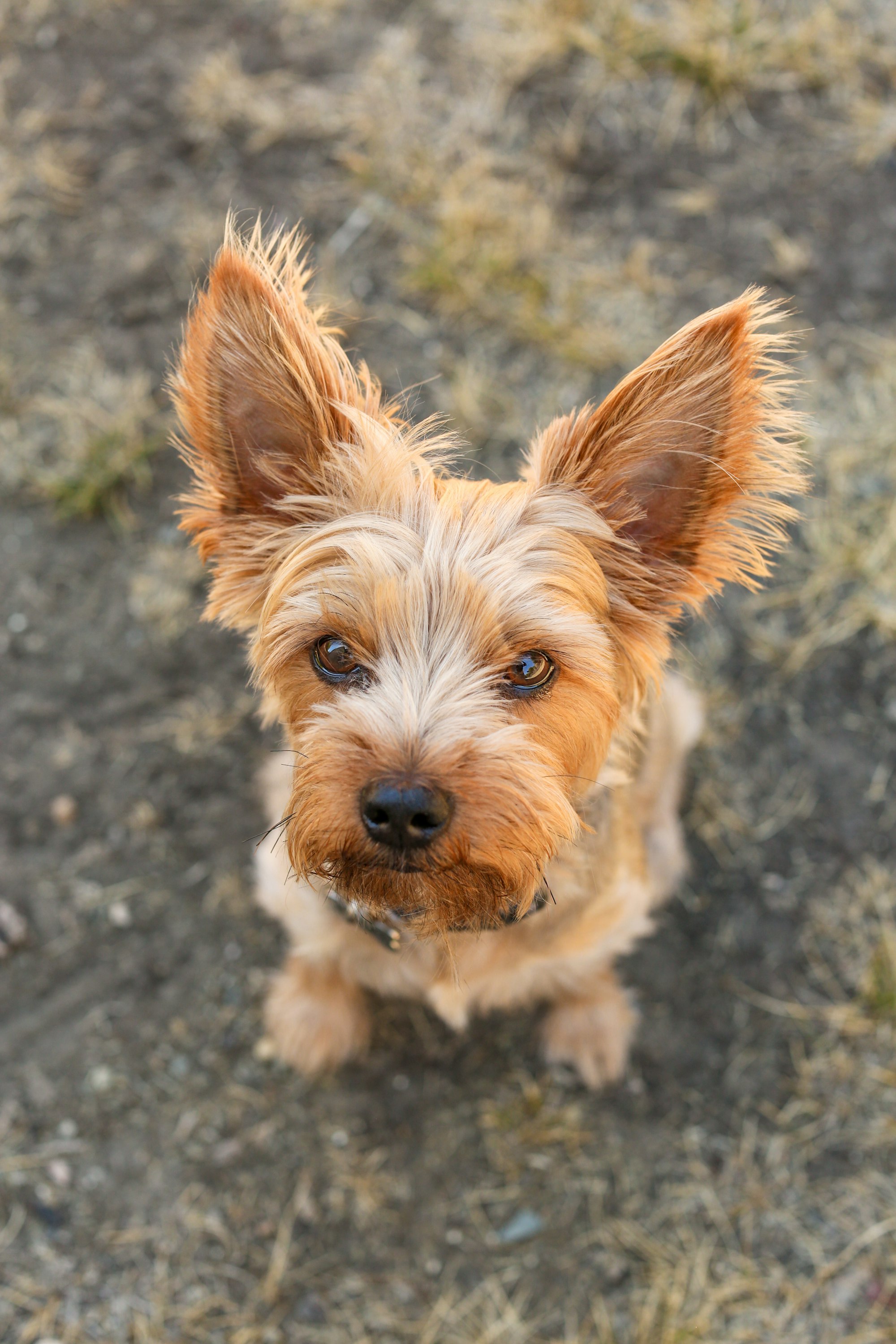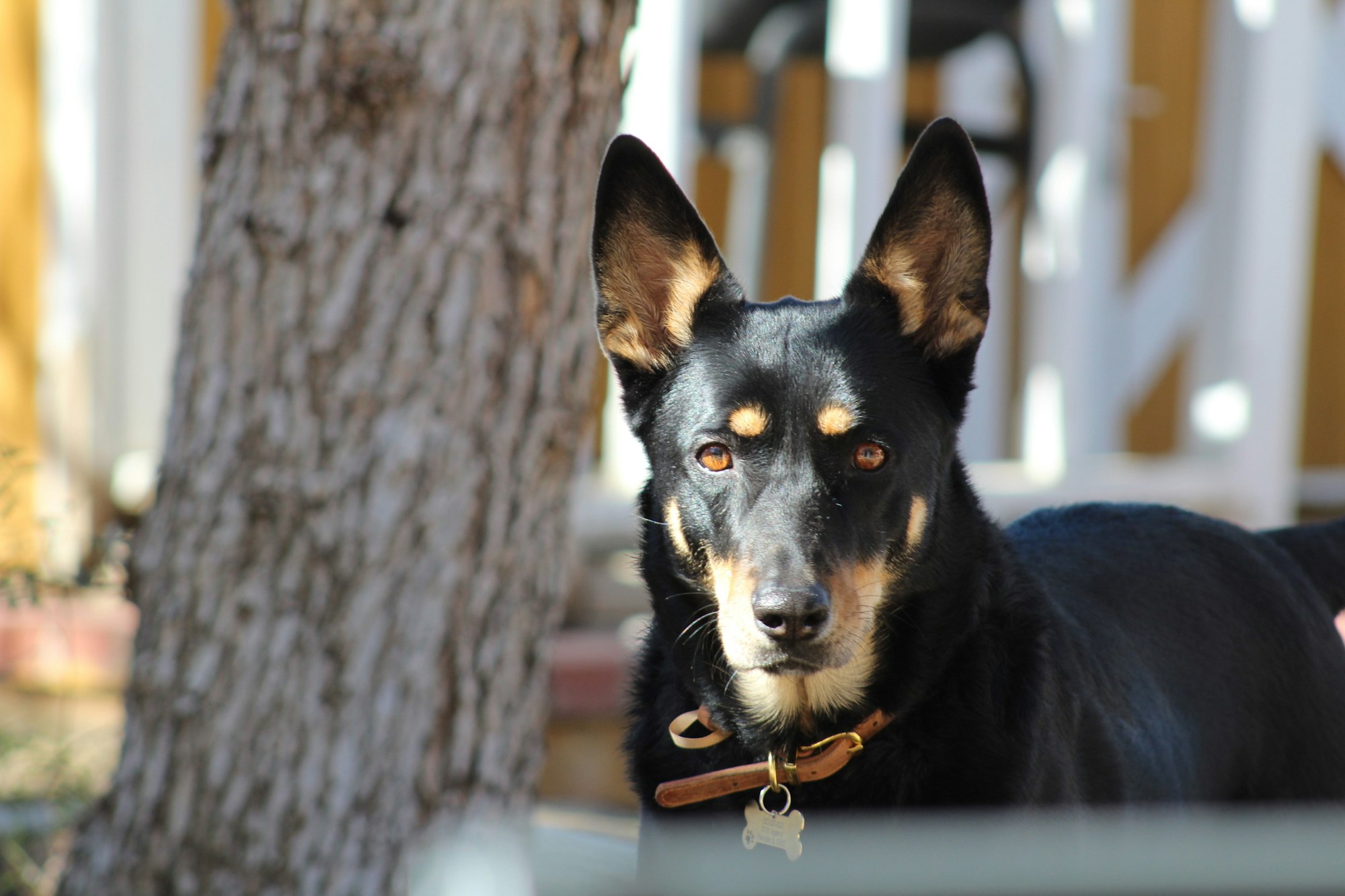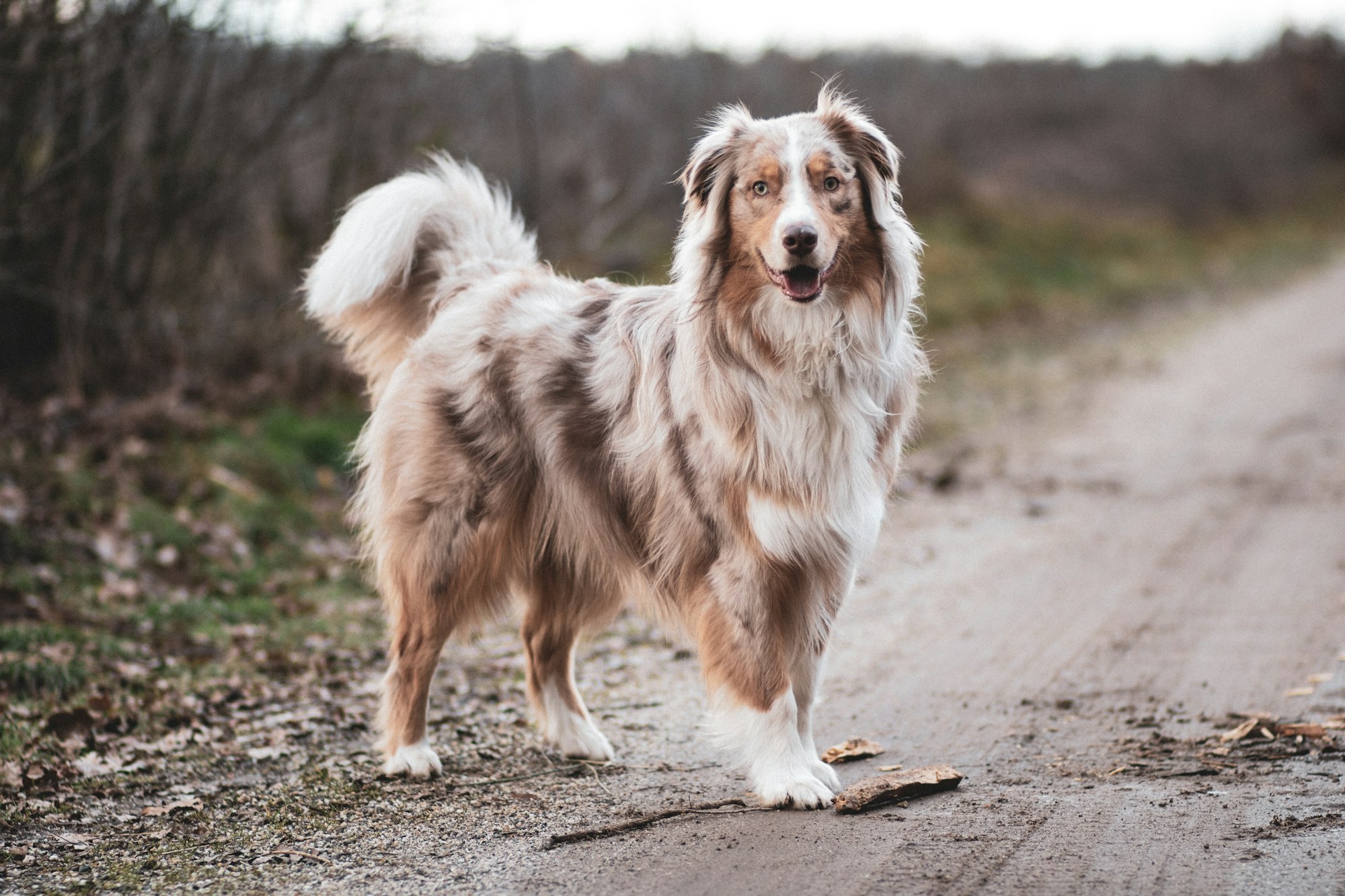Australia is renowned for its unique flora, fauna, and stunning landscapes, but did you know that it's also home to some extraordinary dog breeds? From the hardworking herding dogs to the adorable companions, Australian dog breeds have carved a special place in the hearts of dog lovers worldwide. In this article, we will take a deep dive into the fascinating world of Australian dog breeds, exploring their origins, characteristics, and roles. So, grab a cup of coffee, and let's embark on a journey through the diverse canine companions of the land down under.

Introduction:
Diversity is the hallmark of Australia, and this extends to its canine inhabitants as well. Australian dog breeds come in all shapes, sizes, and temperaments, each with its unique set of traits that make them stand out from the crowd. Whether you're seeking a loyal working partner or a cuddly companion, there's an Australian dog breed to suit your preferences.
1. The Aussie Terrier: A Spirited Companion
The Australian Terrier, affectionately known as the "Aussie Terrier," is a small yet robust breed that exudes confidence and character. Originally bred for hunting and guarding, these terriers have adapted well to urban living, making them an excellent choice for families and singles alike.

Origins and History
Originally bred in Tasmania, the Aussie Terrier was developed by crossbreeding various British terrier breeds. Their compact size and sharp senses made them exceptional hunters of rats and snakes, contributing to the protection of homes and farms.
Characteristics and Temperament
The Aussie Terrier's distinctive double coat, comprised of a soft undercoat and a harsh-textured outer coat, requires regular grooming to maintain its appearance. Despite their small size, they possess a big personality - they are alert, intelligent, and loyal, making them an ideal watchdog and companion.
Ideal Living Situation
Due to their adaptability and compact size, Aussie Terriers can thrive in various living situations, including apartments and houses with yards. They are energetic and enjoy playtime, but their exercise needs can be met with daily walks and interactive play.
Training and Socialization
Early socialization and training are crucial for Aussie Terriers to ensure they develop into well-mannered and well-adjusted companions. Their intelligent nature makes them quick learners, but they can also be independent, so consistent and positive reinforcement methods work best.
2. The Australian Cattle Dog: Herding with Zeal
The Australian Cattle Dog, often referred to as the "Blue Heeler," is a remarkable breed renowned for its herding abilities and boundless energy. Originally bred for driving cattle across vast Australian ranches, these dogs have become cherished members of active households.
Origins and History
The Australian Cattle Dog's lineage traces back to the 19th century when European settlers in Australia needed a capable herding dog to manage large herds of cattle. By crossing native Dingoes with Collies and other breeds, they successfully developed a robust and agile herding companion.
Characteristics and Temperament
Bold and intelligent, the Australian Cattle Dog boasts a unique coat that can come in blue or red-speckled patterns. Their sturdy build and intense focus make them exceptional at herding, and they thrive when given both mental and physical challenges.
Active Lifestyle Requirements
Due to their high energy levels and herding instincts, Australian Cattle Dogs require an active lifestyle that includes regular exercise, mental stimulation, and tasks that mimic their herding nature. Engaging in activities like agility training, obedience trials, and advanced tricks can satisfy their need for stimulation.
Training and Bonding
The Blue Heeler's intelligence and strong work ethic can make training a rewarding experience for both the dog and the owner. However, their independent nature calls for a firm yet gentle training approach that emphasizes positive reinforcement and consistency.
3. The Australian Kelpie: Master of Agility
The Australian Kelpie, known for its remarkable agility and unwavering dedication, is a breed that shines in various roles, from herding to companionship. With a history rooted in the harsh Australian outback, these dogs are well-suited for active and adventurous owners.

Origins and History
Developed in the late 19th century, the Australian Kelpie was bred for its exceptional herding skills and ability to handle livestock in challenging conditions. The breed's name is derived from the legendary Celtic water sprite, which is a testament to their agility and energy.
Characteristics and Versatility
Kelpies are known for their exceptional intelligence and versatility. They excel in various activities, including herding, agility, obedience, and even competitive sports like flyball. Their short coat requires minimal grooming, making them low-maintenance companions for those with busy lives.
Active Lifestyle Partner
An active lifestyle is essential for Australian Kelpies to thrive. Regular exercise, interactive games, and mental challenges are key to preventing boredom-related behaviors. Engaging them in activities that stimulate both their mind and body will lead to a happy and well-adjusted Kelpie.
The Bond Between Kelpies and Their Owners
Kelpies are renowned for forming strong bonds with their owners. They are eager to please and highly responsive to training, making them an excellent choice for those seeking a devoted and trainable companion.
4. The Tenterfield Terrier: Small Dog, Big Personality
The Tenterfield Terrier, often mistaken for the Miniature Fox Terrier, is a lively and affectionate breed that packs a lot of personality into its small frame. Originating from the town of Tenterfield in New South Wales, these terriers have charmed their way into countless households.
History and Development
Bred from a mix of various terrier breeds, including the Smooth Fox Terrier, the Tenterfield Terrier was initially developed for vermin control and hunting. Their small size and playful nature made them popular companions among early Australian settlers.
Characteristics and Temperament
With expressive eyes and a confident demeanor, Tenterfield Terriers are known for their social and friendly nature. They thrive on human interaction and enjoy being a part of family activities. Despite their small stature, they have a surprisingly robust and energetic personality.
Ideal Living Arrangements
Due to their compact size and adaptable nature, Tenterfield Terriers are well-suited for apartment living or homes with small yards. They enjoy playtime and brisk walks, making them ideal companions for both active individuals and families.
Training and Socialization
Tenterfield Terriers respond well to positive reinforcement training methods. Early socialization is crucial to help them develop good manners and interact well with other dogs and pets. Engaging in training sessions that include fun and interactive activities can keep them mentally stimulated and eager to learn.
5. The Australian Silky Terrier: Elegance in Fur
The Australian Silky Terrier, often referred to as the "Silky Terrier," is a breed that combines elegance and tenacity in a small package. With their striking appearance and spirited personality, these dogs are a delightful addition to any household.
Origins and History
Originally bred by crossing native Australian Terriers with Yorkshire Terriers, the Silky Terrier was developed to create a refined and elegant companion. Their silky, blue, and tan coat requires regular grooming to maintain their luxurious appearance.
Characteristics and Temperament
Silky Terriers are known for their lively and affectionate nature. Despite their small size, they possess a fearless and confident disposition. Their keen senses and watchful nature make them excellent watchdogs, alerting their owners to any potential intruders.
Grooming and Care
Maintaining the Silky Terrier's stunning coat requires regular brushing and occasional baths. Their long, flowing hair is prone to tangling, so consistent grooming is necessary to keep them looking their best. Additionally, routine dental care and nail trimming contribute to their overall well-being.
Living with Silky Terriers
Silky Terriers thrive in homes with attentive and affectionate owners. They enjoy being part of family activities and are well-suited for apartment living. Regular play sessions and short walks contribute to their physical and mental health.
The Bond Between Silky Terriers and Their Owners
Silky Terriers form strong bonds with their owners and thrive on companionship. They are loyal and devoted, and their playful nature ensures there's never a dull moment when they're around.
6. The Australian Shepherd: Versatile and Energetic
The Australian Shepherd, often dubbed the "Aussie," is a breed celebrated for its intelligence, versatility, and striking appearance. Despite its name, this breed originated in the United States but earned its place among Australian dog breeds due to its herding prowess.

Origins and History
The Australian shepherds' history can be traced back to the Basque region of Europe, where their ancestors were renowned for their herding skills. As their journey took them to the United States, they played a vital role in managing livestock in various regions before gaining popularity in Australia.
Characteristics and Temperament
Aussies are known for their mesmerizing merle coat patterns and striking heterochromia (different-colored eyes). Their high intelligence and strong work ethic make them exceptional at various tasks, from herding to agility competitions. Explore more about Australian Shepherd Colors.
Active Lifestyle and Mental Stimulation
Given their herding heritage, Australian Shepherds thrive in homes where they have plenty of physical and mental challenges. Engaging them in activities like obedience training, agility courses, and interactive dog toys can keep their minds sharp and their energy well-directed.
Training and Socialization
Australian Shepherds excel in training due to their eagerness to learn and please. However, their intelligence can sometimes lead to stubbornness, so consistent and patient training methods are essential. Early socialization helps them develop into well-mannered companions.
7. The Smithfield: A Historic Working Dog
The Australian Smithfield, also known as the "Smithfield Collie," is a breed that embodies history, loyalty, and hard work. With a heritage tied to Australia's colonial past, these dogs have left an indelible mark on the country's farming and herding practices.
Origins and Historical Significance
Named after the Smithfield markets in London, the Smithfield dog was brought to Australia by early settlers to assist with herding and managing livestock. Their versatile skills made them indispensable on farms, and their influence can still be seen in the working dog breeds of today.
Characteristics and Work Ethics
Smithfields are known for their sturdy build and endurance. Their weather-resistant double coat protects in various climates, making them well-suited for outdoor work. They are intelligent, quick learners, and their loyalty to their owners is unmatched.
Modern Role and Activities
While their historical significance as drovers and herders is still acknowledged, modern Smithfields excel in various dog sports and activities. They enjoy challenges that engage both their minds and bodies, making them fantastic companions for active individuals.
Caring for a Smithfield
Regular exercise and mental stimulation are essential for Smithfield to lead fulfilling lives. Engaging them in activities like obedience training, agility courses, and herding simulations can satisfy their instincts and prevent boredom-related behaviors.
The Smithfield as a Companion
Smithfields form strong bonds with their owners and thrive on companionship and constructive work. Their adaptable nature allows them to integrate well into various living situations, from rural farms to suburban homes.

8. The Tenterfield Terrier: Small Dog, Big Personality
The Tenterfield Terrier, often mistaken for the Miniature Fox Terrier, is a lively and affectionate breed that packs a lot of personality into its small frame. Originating from the town of Tenterfield in New South Wales, these terriers have charmed their way into countless households.
History and Development
Bred from a mix of various terrier breeds, including the Smooth Fox Terrier, the Tenterfield Terrier was initially developed for vermin control and hunting. Their small size and playful nature made them popular companions among early Australian settlers.
Characteristics and Temperament
With expressive eyes and a confident demeanor, Tenterfield Terriers are known for their social and friendly nature. They thrive on human interaction and enjoy being a part of family activities. Despite their small stature, they have a surprisingly robust and energetic personality.
Ideal Living Arrangements
Due to their compact size and adaptable nature, Tenterfield Terriers are well-suited for apartment living or homes with small yards. They enjoy playtime and brisk walks, making them ideal companions for both active individuals and families.
Training and Socialization
Tenterfield Terriers respond well to positive reinforcement training methods. Early socialization is crucial to help them develop good manners and interact well with other dogs and pets. Engaging in training sessions that include fun and interactive activities can keep them mentally stimulated and eager to learn.
Conclusion
From the spirited Aussie Terrier to the energetic Australian Cattle Dog, the versatile Australian Shepherd to the elegant Silky Terrier, and the historical Smithfield to the charismatic Tenterfield Terrier, Australian dog breeds showcase a rich tapestry of traits, history, and roles. Each breed brings its unique flavor to the world of canine companionship, reflecting the diversity and heritage of the land down under.
Frequently Asked Questions (FAQs)
Q1: Are Australian dog breeds suitable for families?
Absolutely! Many Australian dog breeds make excellent family companions due to their loyalty, sociability, and adaptability.
Q2: Do these breeds require specialized training?
While each breed has its training needs, most Australian dog breeds benefit from early socialization and consistent, positive reinforcement training methods.
Q3: Which Australian dog breed is known for its herding abilities?
The Australian Cattle Dog, also known as the Blue Heeler, is renowned for its exceptional herding skills and unwavering dedication to its work.
Q4: Are Australian dogs prone to any specific health issues?
Like all breeds, Australian dogs may have specific health considerations. Regular veterinary check-ups and a healthy lifestyle can help mitigate potential issues.
Q5: Where can I find reputable breeders of Australian dog breeds?
It's essential to research and connect with reputable breeders who prioritize the health and well-being of their dogs. Local breed clubs and online resources can help find responsible breeders.




